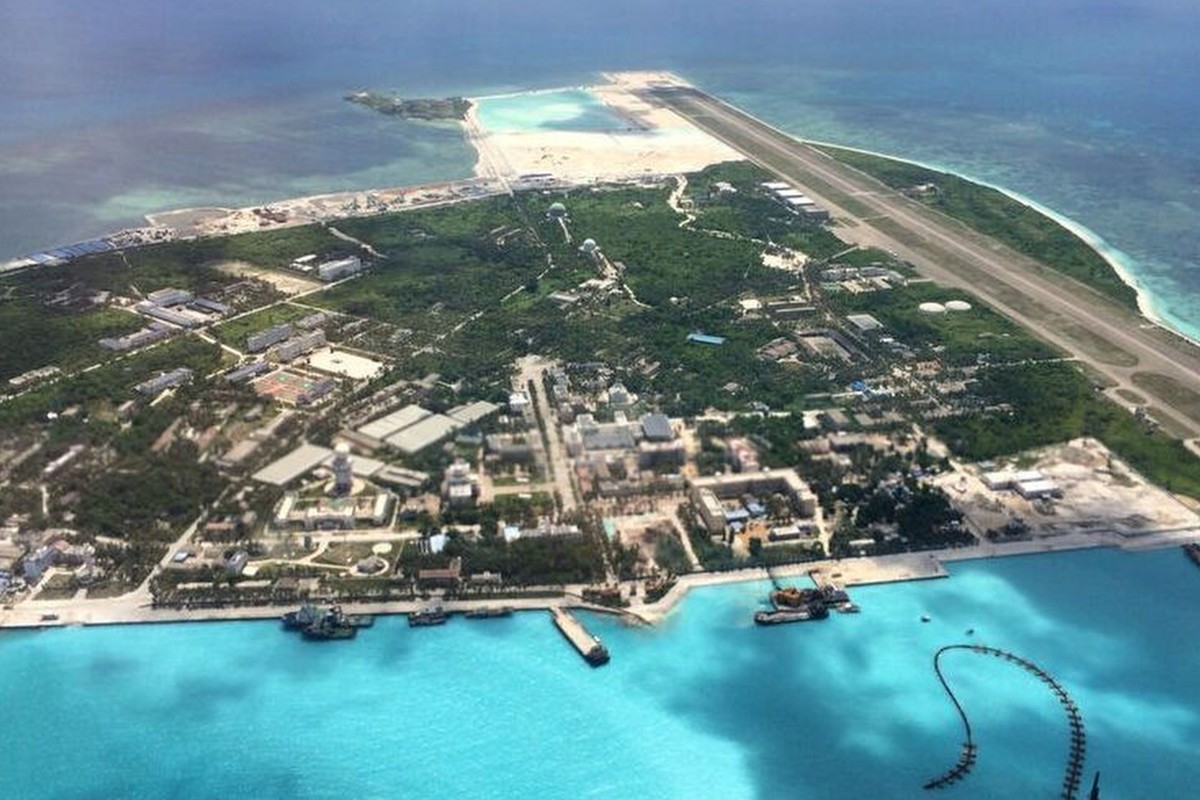Sansha city says it held a meeting on the development which would follow though on a central government directive
It came after US challenge in the region and criticism of ‘China’s illegal island-building in international waterways’
 |
Sansha, part of Hainan province, was established on Woody Island by the Chinese government in 2012. Photo: Handout
|
The southernmost Chinese territory in the South China Sea, Sansha, will press ahead with a plan to build an “island city” on Woody Island and two smaller neighbouring islets in the contested waters.
Zhang Jun, the Communist Party secretary of Sansha, which is located on the island in the Paracels, led a meeting on the development plan there on Friday, according to a statement on the city government’s website.
Sansha, part of Hainan province, was established by the Chinese government in 2012. The party chief said it aimed to turn Woody Island, or Yongxing in Chinese, and two smaller islets – Tree and Drummond, or Zhaoshu and Jinqing – into a “national key strategic service and logistics base”.
“We need to carefully plan the overall development of the islands and reefs based on their different functions, taking into account their complementary relationship,” Zhang said in the statement.
He said the development plan would follow through on a speech given by President Xi Jinping last year and a central government directive issued in April marking Hainan’s 30th anniversary.
The statement did not give further details of the plan but said officials in Sansha must “take active steps and demonstrate their initiatives” to provide a “satisfactory report card” to the party leadership.
The Sansha meeting was held as Beijing’s activities in the South China Sea are under growing international scrutiny and followed a show of force in the region by the United States aimed at countering China’s expansion.
On Tuesday last week, US Secretary of State Mike Pompeo criticised “China’s illegal island-building in international waterways” and accused Beijing of blocking energy development in the South China Sea through “coercive means”.
The top American diplomat’s comments drew a strong response from Beijing. China’s foreign ministry said they were “irresponsible” claims made by an “extraterritorial country” that had repeatedly tried to destabilise the region.
On Wednesday, two American B-52 strategic bombers, which are capable of carrying nuclear weapons,
flew over the disputed South China Seaarea for a second time in 10 days. Beijing has long objected to the US military sailing near or flying over islands claimed by China.
The US Navy has already conducted two freedom of navigation operations in the disputed waters this year. In January, the USS McCampbell sailed near the Paracel Islands, and on February 11, the USS Spruance and the USS Preble sailed near Mischief Reef in the Spratlys – both actions triggering condemnation from Beijing.
The US carried out at least five such operations last year and four in 2017, according to a defence department report. That compared to four in both 2016 and 2015.
Shi Yinhong, a professor specialising in US-China relations at Renmin University of China, said Sansha’s meeting on further island-building was a response to the recent US challenges over the South China Sea issue.
But he said the fact that the statement came from Sansha instead of from the provincial or national level of government indicated that Beijing wanted to keep the plan low-profile.
Shi said he believed China’s priority at present was ending the trade war with the US rather than pushing forward construction and weapon deployment in the South China Sea.
He also believed Beijing was unlikely to push through a vast development plan at speed.
“If this is going to be on a large scale and carried out quickly – which I doubt – then the strategic response from the US will be somewhat dramatic, and the rivalry between Beijing and Washington will escalate,” he said. “That would jeopardise Beijing’s key priorities, both domestic and international.”
Beijing started building islands in the South China Sea in 2014 and has turned the Fiery Cross, Mischief and Subi reefs, in the contested Spratlys, into fully fledged islands, installing a number of military and civilian facilities there.